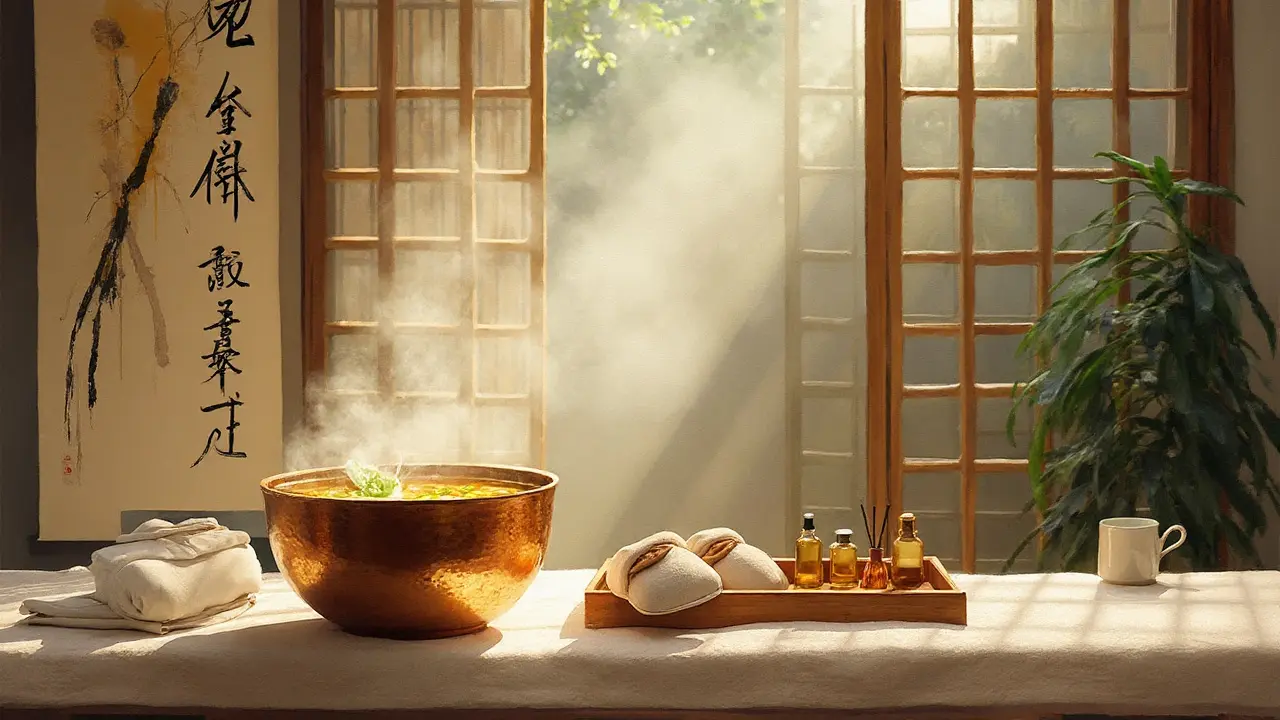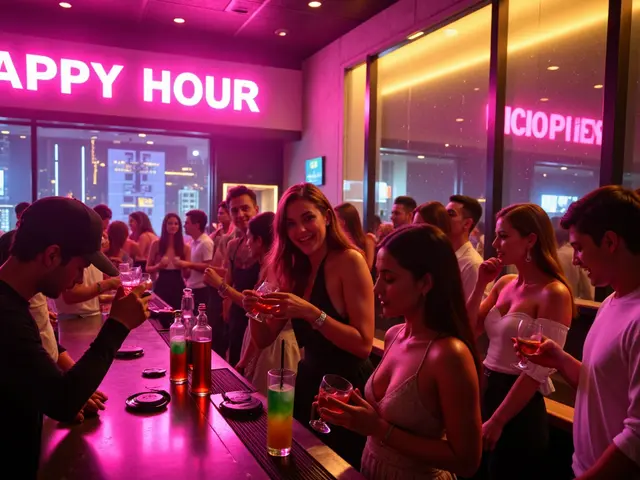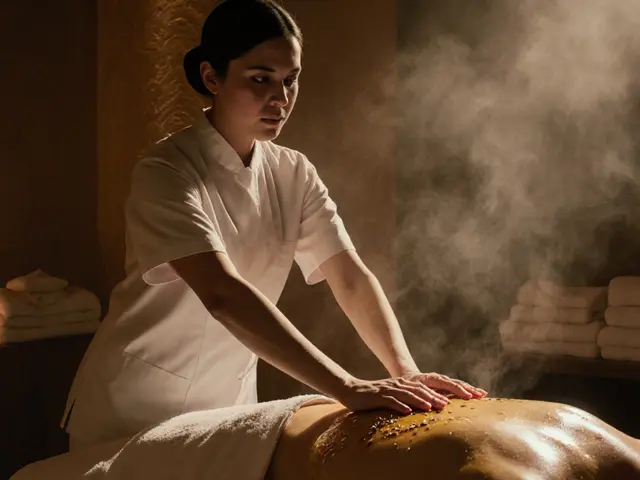Key Points
- The Chinese foot massage you’re thinking of is commonly called reflexology (Chinese foot reflexology). In Mandarin you’ll see 足疗 (zúliáo, “foot therapy”) and 足底按摩 (zúdǐ ànmó, “sole massage”).
- Reflexology isn’t a full medical treatment. It’s a relaxation and wellness practice that uses pressure on mapped points of the feet.
- Expect a warm foot soak, firm thumb pressure along the soles and ankles, and a calm, sleepy feeling after. Speak up if pressure hurts.
- In Dubai, you’ll find foot reflexology in neighborhoods like Deira, Al Karama, Al Barsha, JLT, Dubai Marina, and Business Bay. Typical 60‑min prices: AED 90-220 in street-front shops; AED 250-450 in hotel spas.
- Safety first: avoid sessions if you’ve got active foot infections, recent fractures, severe neuropathy, or a high‑risk pregnancy. Check hygiene, licensing, and pressure comfort.
Direct Answer: What Is the Chinese Foot Massage Called?
Short answer: reflexology-often called Chinese foot reflexology. On spa menus you’ll see “Reflexology,” “Foot Reflexology,” “Foot Therapy,” or “Foot Spa.” In Mandarin, two common names are 足疗 (zúliáo), meaning “foot therapy,” and 足底按摩 (zúdǐ ànmó), meaning “sole massage.” Some spots also use 足部按摩 (zúbù ànmó), “foot massage.” If you’re searching online or in shopping arcades, any of those terms point to the same service.
How it differs from a regular foot massage: a regular massage aims at muscles and general relaxation; reflexology focuses on specific points believed to reflect body systems. You’ll feel more focused thumb pressure along set zones rather than broad kneading alone.

Guide to Chinese Foot Reflexology
Think of reflexology as a foot-focused roadmap to unwind. Practitioners use steady, targeted pressure along the soles, toes, heels, and ankles based on a chart that links points on the foot to different parts of the body. In Chinese wellness culture, you’ll often see this framed through meridians and energy flow. In the West, the word “reflexology” became popular in the early 1900s through “zone therapy.” Today, it’s a widely offered spa and wellness service-great for stress relief and tired feet.
Why people book it: the big win is deep relaxation. After a day in tight shoes or a long flight, your feet hold tension. Reflexology gives them specific attention-less aimless rubbing, more intentional pressure. Many people also report better sleep that night and a sense of “lightness” in the legs.
What the science says: reflexology has mixed evidence. Reviews from major groups like the Cochrane Collaboration and statements from the U.S. National Center for Complementary and Integrative Health say research is limited and results vary. Small randomized trials have found short-term benefits for anxiety reduction and perceived pain relief, especially around procedures or chronic stress, but it’s not a cure for medical conditions. That’s the honest, current picture: good for relaxation, promising for comfort, not a replacement for proper medical care.
What a typical session includes:
- Warm welcome and quick check-in: your therapist asks about pressure preferences and any foot issues.
- Foot soak: a few minutes in warm water to soften the skin and switch your nervous system into rest mode.
- Dry, cream or oil: they’ll wipe your feet dry, then add a small amount of cream to reduce friction.
- Pressure work: thumbs and knuckles press along the arches, ball of the foot, toes, and heel in a set sequence. Expect firm, targeted pressure-sometimes slightly tender on tight spots.
- Ankle and lower leg: light strokes and kneading to flush the calves and ease stiffness.
- Wrap-up: a warm towel, a sip of water or tea, and a minute to sit up without rushing.
How it feels: soft at the start, then more focused. Tender areas are usually brief and manageable; the goal isn’t pain. Good therapists will adjust right away if you ask.
Common reflex points you might notice:
- Arch zones: often worked for stress and digestive comfort.
- Heel and Achilles area: tight if you’ve been standing a lot.
- Big toe base: worked for head and neck tension.
- Ankle hollows: sometimes used in traditional routines; avoided or softened during pregnancy.
Benefits you can realistically expect:
- Relaxation and stress relief
- Feet and calf comfort after standing, walking, or training
- A “grounded” feeling and sometimes better sleep that night
- Short-term relief of tight spots in the feet
Who should check with a doctor or skip it for now:
- Severe peripheral neuropathy, diabetic foot ulcers, or open wounds
- Recent sprains, fractures, or surgery on the feet or ankles
- Active infections (athlete’s foot, cellulitis)
- High-risk pregnancy, history of preterm labor, or placenta concerns
- Blood clotting disorders; current DVT risk
Light, comfort-focused work can sometimes be adapted, but always ask your doctor first if you’re unsure.
At-home mini routine (between spa visits):
- Soak: 5-8 minutes in warm water with a pinch of Epsom salt.
- Warm-up: rub a drop of lotion between your hands and glide from toes to heel a few times.
- Thumb walk the arch: small steps from heel to ball of the foot. Pause on tight spots, breathe slow.
- Toe press: squeeze each toe, roll it gently, and press under the base of each toe for 3-5 seconds.
- Heel release: circular pressure on the heel and along the outer edge of the foot.
- Calf finish: knead the calf up toward the knee to pump out tension.
Rules of thumb: no sharp pain, no bruising, and hydrate after. If something feels off the next day, ease up next time.
Where to Try It in Dubai: Finding, Prices, Safety, and FAQs
Living in Dubai, I see reflexology menus almost everywhere-mall corridors, hotel spas, and tucked-away wellness shops. If you’re new here, here’s how to find a good spot without guesswork.
How to find reliable reflexology near you:
- Search terms: “reflexology,” “foot reflexology,” “foot therapy,” or the Mandarin “zúliáo.” In tourist areas you’ll also see “Foot Spa.”
- Neighborhood hotspots: Deira and Al Karama for budget-friendly, straightforward shops; Al Barsha and Business Bay for mid-range; JLT and Dubai Marina for stylish lounges and hotel spas.
- Check licensing: look for a Dubai Economy & Tourism license certificate at the reception. Staff should be uniformed, with clean tools and fresh linens.
- Read recent reviews: filter for the latest 3-6 months. Look for comments about pressure control, cleanliness, and whether the therapist listens.
- Call ahead about pressure style: tell them if you prefer gentle, medium, or firm, and whether you want oil-free (common in reflexology).
Typical Dubai pricing and booking tips:
- Budget street-front shops: AED 90-220 for 60 minutes; AED 50-120 for 30 minutes.
- Mid-range spas: AED 200-320 for 60 minutes; packages may bundle head/shoulder work.
- Hotel spas: AED 250-450 for 60 minutes; sometimes include lounge access and tea.
- Peak hours: early evening and weekends. If you like quiet, go weekday afternoons.
- Tipping etiquette: appreciated but optional; 10-15% for great service is common.
What to expect on the day:
- Arrive 5-10 minutes early to settle in and request your preferred pressure.
- Remove shoes and socks; roll up trousers to mid-calf.
- Enjoy the soak, then the sequence of thumb pressure and short glides; most sessions end with a warm towel.
- Drink water after; plan a light schedule for an hour post-session if you can.
Safety checklist (quick scan before you sit down):
- Clean foot bath and fresh towel? Good sign.
- Therapist washes hands before starting? Non‑negotiable.
- They ask about injuries, pregnancy, or conditions? Shows professionalism.
- Open wounds or infections? Reschedule-don’t risk it.
- Pain scale above 6/10? Ask for lighter pressure right away.
Reflexology vs regular foot massage in Dubai
| Feature | Reflexology (Chinese Foot Reflexology) | Regular Foot Massage |
|---|---|---|
| Technique | Targeted thumb pressure on mapped points; structured sequence | Broader kneading and strokes for general relaxation |
| Goal | Relaxation + focus on specific reflex points | Muscle comfort, soothing soreness |
| Oil/Cream | Often minimal (to keep grip for pressure) | Usually more oil/cream for glide |
| Feel | More focused; sometimes tender spots | Smoother, less pinpoint |
| Typical Dubai Price | AED 90-450 (venue dependent) | AED 80-420 (venue dependent) |
Quick self-advocacy tips (so you get the session you want):
- Say your preferred pressure up front-and repeat it if it drifts.
- Point to any no‑go areas (old sprain, sensitive arch) before they start.
- If you’re pregnant, mention it early. Ask them to avoid strong ankle/sole points.
- No bruising is a rule. Footwork should never leave you spotted purple the next day.
FAQ: your top questions answered
Chinese foot massage vs reflexology-same thing?
In daily language, yes. People say “Chinese foot massage” when they mean reflexology or Chinese foot reflexology. Exact techniques vary, but you’ll get the targeted pressure style.
How long should a session be?
Thirty minutes is a nice reset; sixty minutes lets the therapist cover both feet thoroughly and add calves. If you walk or stand a lot, 60 is worth it.
Will it hurt?
It shouldn’t. Slightly tender spots are normal, but sharp pain is a no. Tell them to ease off.
Can it fix a medical issue?
No. It’s a complementary wellness practice. Enjoy it for relaxation and comfort; see your doctor for diagnosis and treatment.
Is it safe during pregnancy?
Gentle foot work can be soothing, but avoid strong pressure on certain ankle/sole points and skip it entirely if you’re high risk. Always check with your doctor first.
Any aftercare?
Drink water, keep the rest of your day easy, and wear roomy shoes. If you feel unusually sore, wait a few days before your next session and ask for lighter pressure next time.
Next steps
- First-timer? Book 30 minutes mid-week to test your pressure comfort.
- On your feet all day? Try weekly 45-60 minutes for two weeks, then reassess.
- Light sleeper? Schedule an evening session and note your sleep that night.
- Unsure where to go? Start with a licensed spa in Al Barsha or JLT, then branch out once you know your preferred style.
One last tip: if the menu says “Reflexology & Head Massage combo,” it’s a great value. Ten minutes on the neck at the end can make your shoulders feel new.
Ready to kick off your shoes and switch off your brain for an hour? Pick a quiet slot, request your ideal pressure, and enjoy that post-session float home.
By the way, if you’re searching by Mandarin names, you’ll often see zúliáo (足疗) on signboards and zúdǐ ànmó (足底按摩) in detailed menus-both point you to the same relaxing footwork.







September 6, 2025 AT 14:20
Quick note on the Mandarin terms: the post got the characters right and the tones included help a lot for clarity.
For anyone reading menus, remember that 足疗 (zú liáo) is the umbrella term, while 足底按摩 (zú dǐ àn mó) signals focused sole work.
Pronunciation aside, the practical takeaway is the same-ask about pressure and any medical flags before they start.